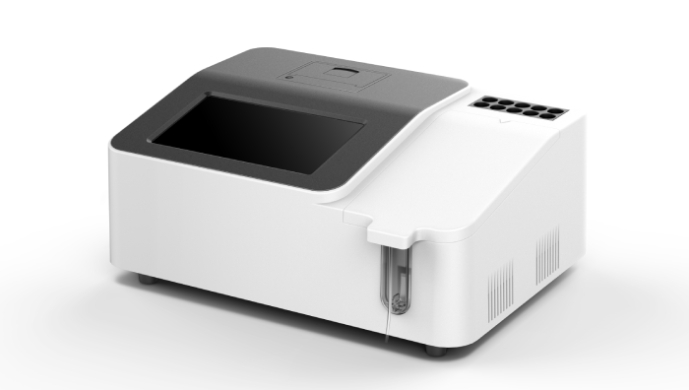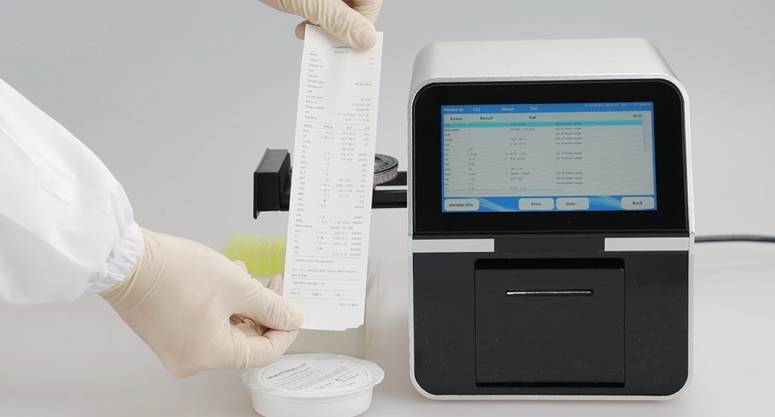In vitro diagnostic reagents are widely used in medical research and clinical testing, and because of their stable quality and reliable effect, they not only provide the basis for scientific research and treatment, but also provide technical information for disease prevention and control.
There are many types of in vitro diagnostic reagents, involving many disciplines, and it is difficult to classify them simply based on a certain principle because of the increasing interdisciplinary phenomenon and the emergence of new technologies.
From the perspective of clinical specialties, they can be divided into clinical hematology and body fluid testing reagents, clinical chemistry reagents, clinical immunology reagents, and microbiology, cell histology and molecular biology reagents. From the perspective of methodology, it can be divided into chemical colorimetric method, immunoturbidimetric method, enzyme-linked immunoassay, colloidal gold method, immunofluorescence method, chemiluminescence reagent, molecular biology reagent, immunohistochemistry reagent, immunocytochemistry reagent, etc.
Clinical biochemical reagents are mainly used for testing with
semi-automatic and automatic biochemical analyzers and other instruments. There are various analytical methods and technical principles used for the commonly used clinical biochemical reagents, which are described below.
1. Spectral analysis technique
This technique is based on the measurement of the wavelength and intensity of the emitted, absorbed or scattered radiation generated by the quantum leap between energy levels occurring within the substance when the substance interacts with radiation energy, and thus the method of analysis is performed. Depending on the object of action, spectroscopic analysis techniques can be divided into atomic spectroscopy (measuring ions, trace elements, etc.) and spectrophotometry. Depending on the method of acquisition, the technique can be divided into absorbance photometry and emission spectroscopy.
Absorbance photometry is a method of analysis based on the property of selective absorption of light by substances in solution. Colored solutions have the property of selective absorption of light, and different substances have different absorption capacities for different wavelengths of light due to their different molecular structures. Each substance has a specific absorption spectrum. When a certain wavelength of light passes through the solution of the substance, according to the degree of absorption of light (absorbance) of the substance to find out the content of the substance method is called absorbance photometric method.
Absorbance photometry can be divided into two categories: colorimetric and spectrophotometric methods. Colorimetric method can be divided into visual colorimetric method and photoelectric colorimetric method. Spectrophotometric and photoelectric colorimetric methods are similar in principle, both are methods of analysis by measuring the intensity of the transmission of the solution through a photocell or a photocell.
When using colorimetric methods to determine a chemical component in a solution, it is usually necessary to add a color developer to produce a colored compound. The shade of color is proportional to the content of the chemical component to be measured, and the concentration of the substance to be measured can be determined accordingly.
Emission spectrometry is a method for qualitative and quantitative analysis by measuring the wavelength and intensity of the emission spectrum of a substance.
Many substances are photoluminescent, meaning that they absorb electromagnetic radiation. The radiation is then re-emitted at the same or longer wavelengths. The most common types of photoluminescence are fluorescence and phosphorescence. The method of analysis using fluorescence intensity is called fluorescence. In fluorescence analysis, the light absorbed by a molecule of the substance to be measured when it becomes excited is called excitation light, and the fluorescence produced when the molecule in the excited state returns to the ground state is called emission light. The fluorescence method determines the intensity of the fluorescence emitted by the molecules of the substance to be measured after being excited by light, rather than the intensity of the excitation light. Any compound that can produce fluorescence can be measured qualitatively or quantitatively by fluorescence analysis.
Scattering spectroscopy is a quantitative measurement method that determines the degree of light absorption or light scattering after light passes through a mixed particle in solution. It is mainly used in immunoassay systems and is often referred to as the immunoturbidimetric method.
2. Electrochemical analysis method
Electrochemical analysis is a method that uses the electrochemical properties of a substance to determine the change in potential, current or power of a chemical cell to perform analysis. Electrochemical analysis method has a variety of.
(1) Determination of the electric potential of the primary cell for the substance content of the analysis method is called potential method or potential analysis method.
(2) The analysis method of determining the substance content through the determination of electrical resistance is called conductivity method.
(3) The method of analysis by means of sudden changes in certain physical quantities as an indication of the end point of titration analysis is called electrovolume analysis.
The main electrochemical analysis method currently used in clinical practice is ion selective potentiometric analysis. This method uses the relationship between the electrode potential and the active substance within the solution to perform the analysis.
From the methodological point of view, clinical immunodiagnostic reagents can be classified into different types such as immunoturbidimetric methods (described in scattering spectroscopy techniques), enzyme-linked immunoassays and chemiluminescence.
3. Enzyme-linked immunoassay
This technique is an immunolabeling assay that combines the specificity of an enzyme-efficient catalytic reaction with the specificity of an antigen-antibody reaction. The principle is that the enzyme is conjugated to an antibody or antigen to form an enzyme-labeled conjugate. The enzyme-labeled conjugate retains both the immunological activity of the antigen or antibody and the catalytic activity of the enzyme on the substrate. After the specific reaction of the enzyme-labeled antibody with the antigen is complete, the corresponding substrate for enzymatic action is added. The color development reaction is completed by the enzyme-catalyzed substrate, and the antigen or antibody is localized, characterized and quantitatively determined.
4. Immunofluorescence technique
This technique is a fluorescence microscope tracing technique that uses the property of a substance to emit light by absorbing light energy and producing an excited state, and chemically binds a fluorescein with this property to a specific antibody or antigen without damaging its antibody or antigen activity.
5. Flow cytometry
This technique is an assay for the quantitative analysis and sorting of components on the surface and inside the membrane of single cells or other biological particles. It can analyze tens of thousands of cells at high speed and can measure multiple parameters from a single cell at the same time. Compared to traditional fluoroscopy, this method is fast and highly accurate.
6. Colloidal gold technology
This technique can be divided into colloidal gold immuno-permeation test and colloidal gold immunochromatography test according to the flow form of the liquid.
7. Chemiluminescence immunoassay
This technique combines a highly sensitive chemiluminescence assay with a highly specific immunoassay for the detection and analysis of various antigens, semi-antigens, antibodies, hormones, enzymes, fatty acids, vitamins and drugs. Chemiluminescence immunoassay contains two parts: immunoreactive system and chemiluminescence analysis system.
Clinical molecular biology diagnostic reagents are commonly known as genetic diagnostic reagents, and the technical principles used mainly include nucleic acid molecular hybridization technology, DNA sequencing technology, gene chip technology, etc.
8. Nucleic acid molecular hybridization technology
This technology, also called gene probe technology, is a technique that uses the principles of denaturation, complexation and base complementary pairing of nucleic acids to detect whether a sample contains a nucleotide sequence paired with a known probe sequence. This technique is the earliest and most basic molecular biology technique used in clinical applications, and is the basis for technologies such as blot hybridization and gene chips.
9. DNA sequence analysis
This analysis technique is an important basic technique of molecular biology. Take a sequencer as an example, it uses 4 fluorescent dyes to label terminators or primers respectively, and after the Sanger sequencing reaction, the reaction products carry different fluorescent labels.
The four sequencing reaction products of a sample can be electrophoresed in the same lane, thus reducing the impact of mobility differences between sequencing lanes on accuracy. The individual fluorescently labeled fragments are separated by electrophoresis. At the same time, the laser detector is scanned simultaneously and the excited fluorescence is spectroscoped by a grating to distinguish different colors of fluorescence representing different base information and imaged simultaneously on a CCD camera.
The computer can synchronize the instrument operation during the electrophoresis process, and the results can be output as electrophoresis profiles, fluorescence absorption peak maps or base alignment order. This method sequencing is the basic principle of generation sequencing.
High-throughput sequencing technology is a revolutionary change from traditional sequencing and can sequence hundreds of thousands to millions of DNA molecules at once. Second-generation sequencing technologies link the fragmented genomic DNA with connectors on both sides and subsequently generate arrays of millions of spatially fixed PCR clones using different methods. The technology has now evolved to third-generation sequencing technologies, namely single-molecule sequencing.



